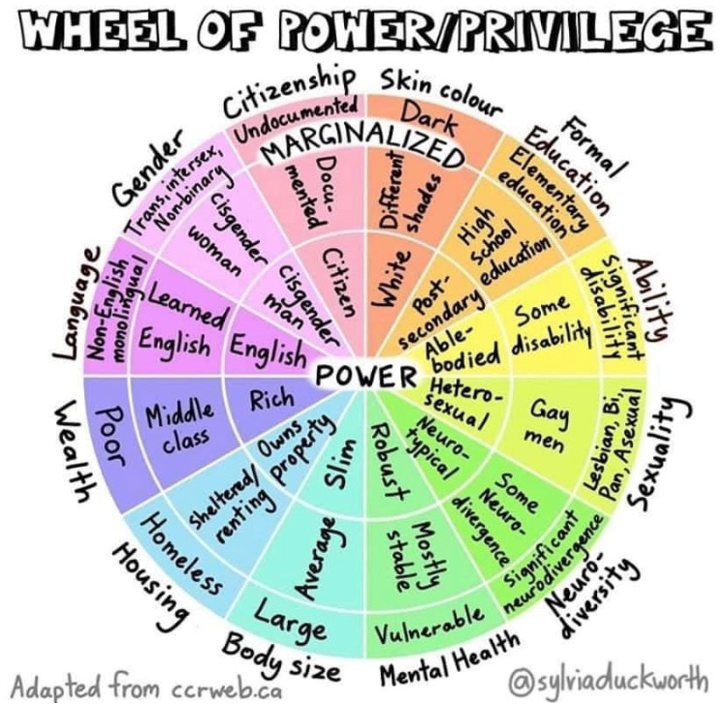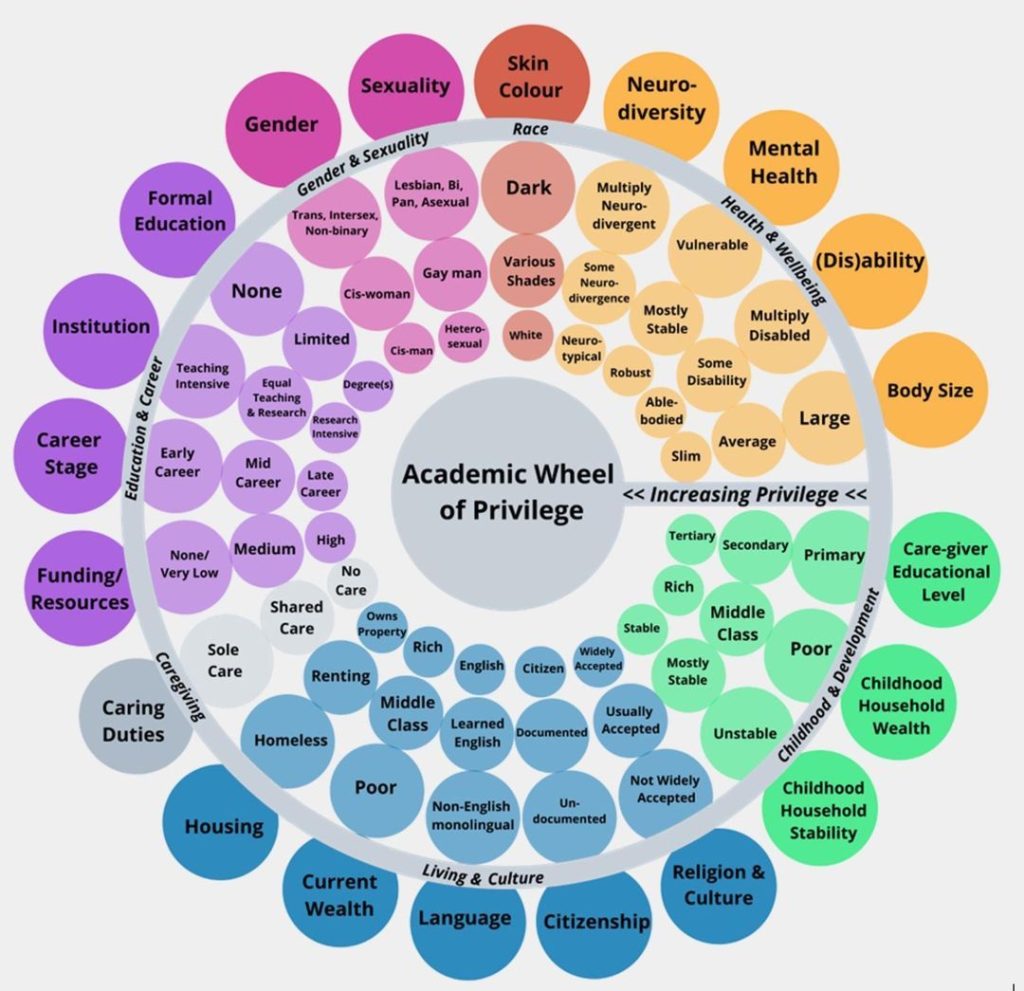Social location
Sociologists often use the phrase social location to describe the ways in which each person’s collective, intersecting social identities affect their position in the world, including the opportunities and challenges they face and the perspectives from which they perceive and experience reality.
All our social identities contribute in some way to our social location, making it a complex and nuanced phenomenon.
One way that social identities may be represented is as a circle or wheel that portrays various identities as existing in closer proximity to power and resources, and others as further away from these.
Exploring identity categories
Take a moment and look through some of the categories included on the version below. Are there any here that you might not have thought of?

Instructions
To explore the content below, select the “>” icon to expand the section.
If you’re using keyboard navigation, use the Tab, Up, or Down arrow keys to move between sections, and press Spacebar to expand or collapse them.
Another example of an identity wheel was developed by the team at FORRT, and might resonate more strongly with you. This version explores many of the factors that go into shaping the relative privileges and barriers faced by those in the world of higher education.
Perhaps you can recognize some of the ways you have experienced challenges in your own career in terms of your various positions on this wheel.

Instructions
To explore the content below, select the “>” icon to expand the section.
If you’re using keyboard navigation, use the Tab, Up, or Down arrow keys to move between sections, and press Spacebar to expand or collapse them.

